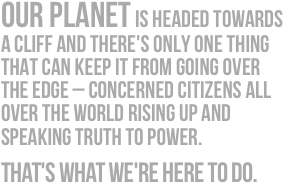By Juan Soriano
The sixteenth session of the climate change negotiations opened yesterday at the Moon Palace Resort in Cancun, Mexico. A year has passed from the meeting in Copenhagen which failed to deliver a fair, ambitious, and binding deal. As opposed to last year’s high expectations in Copenhagen, this year expectations are rather low. Both countries and observer organizations are seeing these negotiations as a milestone to (hopefully) reach an agreement next year in Durban, South Africa – the chosen city for the next COP, or Conference of Parties.
But how did we go from time-is-up in Copenhagen to we-can spare-another-two-years to broker a deal on climate change? It is something that still puzzles me. Even with expectations at a low point, the prospect of what parties have called a “balanced outcome” in Cancun already has big caveats. Despite advanced negotiations on several issues including adaptation, the REDD+ mechanism (REDD is short for Reducing Emissions from Deforestation and Forest Degradation, a series of steps designed to use market and financial incentives to reduce the emissions of greenhouse gasses from forest degradation and deforestation), technology transfer, and capacity building, the biggest challenges to overcome at this meeting are finance, mitigation, and accountability. Among parties and observers it is clear that a balanced outcome on all issues is necessary if we hope to finalize an agreement next year. The problem lies in what constitutes a balanced outcome.
This year’s COA delegation is participating in the negotiations from different fronts. Whether it is negotiating as part of the Saint Lucia delegation, helping the delegation of Granada, assisting the climate justice network, working with the International Youth Climate Movement, or learning more about the UNFCCC process, we come with a common goal: to work towards a just and fair climate deal.


